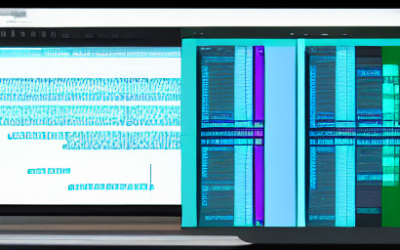The main difference between .NET vs Java is that .NET is a proprietary language developed and maintained by Microsoft, while Java is an open-source language that is developed and maintained by Oracle. .NET is used primarily for Windows-based applications, while Java is used for cross-platform applications that can run on multiple operating systems.
Tech Blog
Tech Insights, Information, and InspirationWhat is scrum methodology?
Scrum is an Agile project management methodology used for software development projects. It is a framework that helps teams work together to complete a project within a specific time frame. Scrum is based on three core values: commitment, focus, and openness.
.NET Core vs .NET Framework
The main difference between .NET Core and .NET Framework is that .NET Core is open-source and cross-platform, whereas .NET Framework is Windows-only. .NET Core also has a different codebase and architecture than .NET Framework, meaning that applications developed for .NET Core may not run on .NET Framework.
ERP vs CRM Software
The main difference between ERP and CRM software is the focus. ERP software is focused on managing the operations of a business, while CRM software is focused on managing customer relationships. ERP software is typically used by larger companies, while CRM software is used by businesses of all sizes. ERP software is also typically more expensive than CRM software.
EHR and EMR Software
Electronic Health Records (EHR) and Electronic Medical Records (EMR) are both types of software used to store and manage patient medical records. EHRs contain a patient’s medical history, diagnosis, treatment, and more, while EMRs are typically used to store patient visits, treatments, and follow-up care. Both systems are designed to allow for secure access to records by both the patient and healthcare providers. Additionally, EHRs and EMRs both provide the ability to integrate with other systems, such as billing software.
Choosing a PHP Framework
PHP frameworks are software packages that provide a universal development platform for creating web applications. These frameworks are designed to streamline application development, reduce the time and cost of development and simplify the process of coding. As a result, they are widely used by both professional developers and hobbyists alike.
PHP vs Python for Web Development
Both PHP and Python are used in web development, and they each have their own advantages and disadvantages. PHP is often used for simpler, smaller projects, while Python is better suited for more complex, larger projects. Python is more versatile and powerful than PHP, but it is also more difficult to learn. PHP is easy to learn, but it is not as powerful or versatile as Python.
Bridging the Gap Between Business and Technology
Bridging the gap between business and technology is essential if an organization wants to remain competitive. The primary goal of bridging the gap between business and technology is to ensure that the technology is utilized to its fullest potential. This can be done by understanding the objectives of the business and how technology can help achieve those goals. It is important to ensure that the technology is used in a way that is cost-effective, reliable and scalable.
How to Develop a SaaS Application
Software as a Service (SaaS) is a software deployment model in which a provider hosts applications and makes them available to customers over a network, usually the internet. SaaS applications are typically accessed through a web browser and can be used on any device with an internet connection.
How to Choose a Technology Stack for your Project
Choosing a technology stack for your project can be a daunting task. With so many options available, it can be difficult to make the right choice. Here are some tips to help you select a technology stack for your project:
Get In Touch
UseTech Design, LLC
TROY, MI • BLOOMFIELD HILLS, MI
Call or text +1(734) 367-4100










